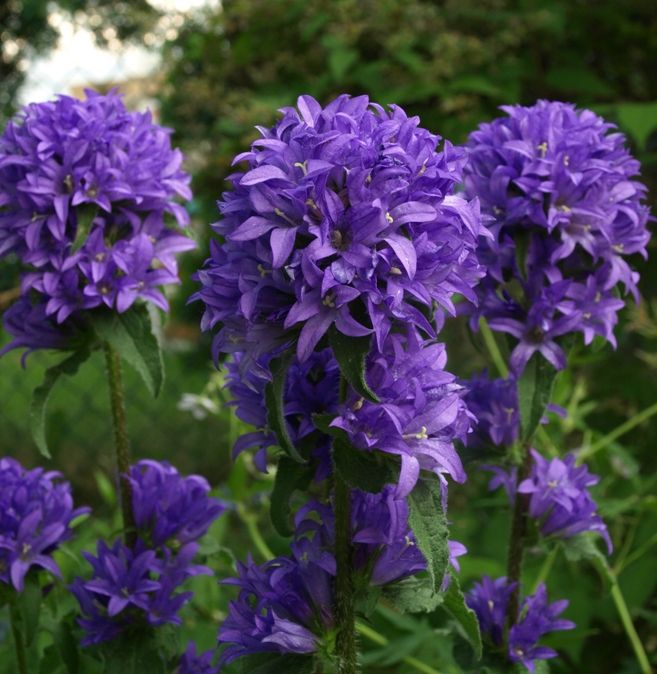Clustered Bellflower is another herbaceous flowering plant that grows from June to September. It grows up to 20-60cm. The stem of this plant is erect, pubescent and simple. The leaves of these flowers are heart-shaped and sessile. Its inflorescence develops through 15-20 sessile. Each flower contains purple blueish or dark blue 5 to 6 petals.
Condition To Grow:These flower loves to grow in nutrients rich soils. Full sunlight and partial shades are also fundamental for their development. Moreover, the soil must be well-drained. It needs an average amount of water.
Scientific Name: The scientific name of clustered bellflower is Campanula glomerata L.
Common Names: There are two common names for this flower
- Clustered bellflower
- Dane’s blood
Family:Campanulaceae is its belonging family.
Genus:Campanula
Species:C. glomerata
Height: This plant average growth range from 8-24” tall.
Stems: Clustered Bellflowers possess short pubescent stems that are simple and erect.
Leaves:Its leaves are basal and grow in heart shape.
Colour: The flowers of this plant grow in purple blueish colour.
Foliage:Its foliage remains evergreen.
Use: These flowers are ideal to enhance the beauty of gardens small or large. In addition to this, these flowers are best to combine with various other perennial wildflowers. Significantly these flowers are best for creating beautiful beds.
Care And Maintenance:
- Clustered bellflower needs slow feed in the spring season.
- Keep the soil healthy by normal watering.
- The soil should contain alkaline in average amount.
- If the weather is quite warm provide this plant with extra water.
Frequently Asked Question:
Are clustered Bellflower poisonous for living things?
No these flowers are not toxic because it is proved through a California poison control system. These flowers don’t harm animal and human beings.
Dane’s blood flowers are native to which regions?
Dane’s blood flowers are native to West Asia and Europe. And are also grown in North America.
Alternative:
Carpathian Bellflower.

